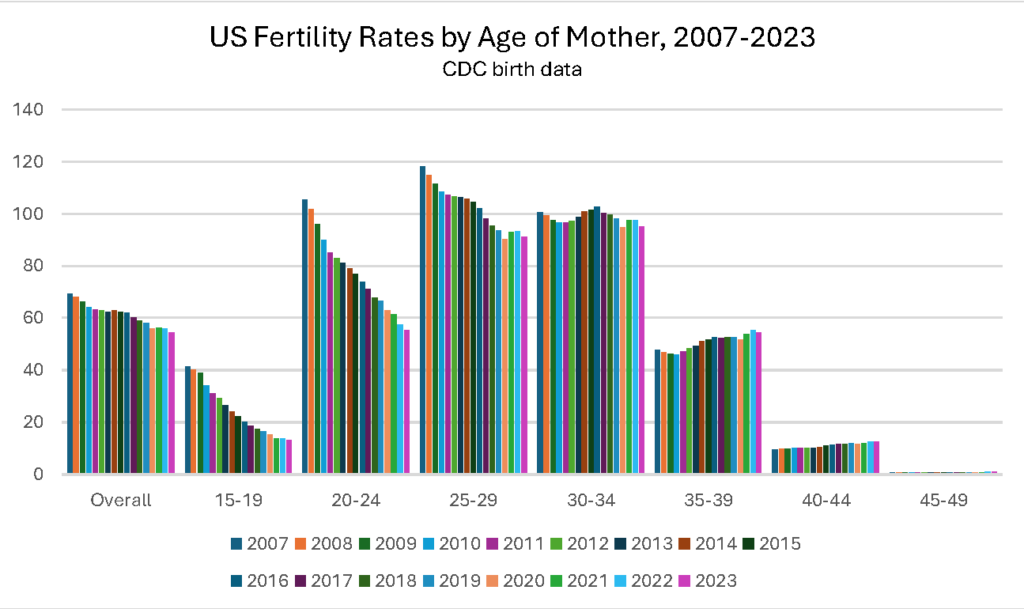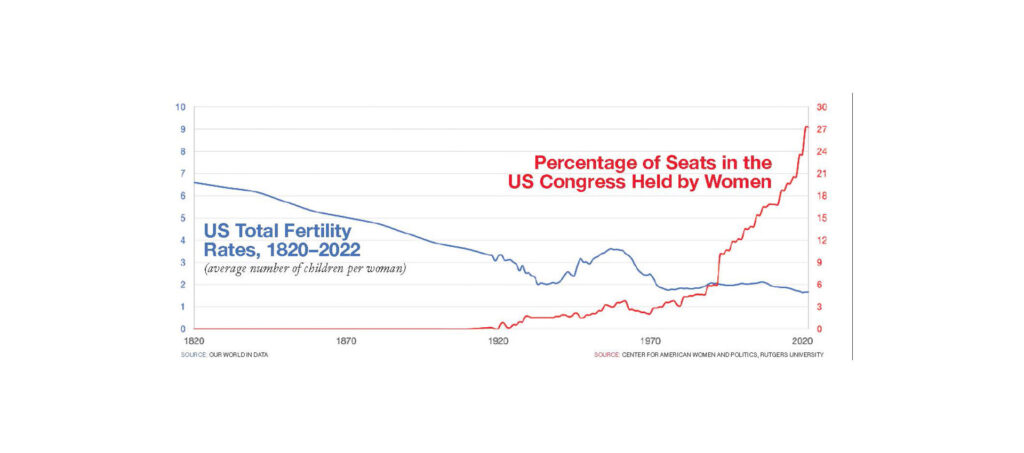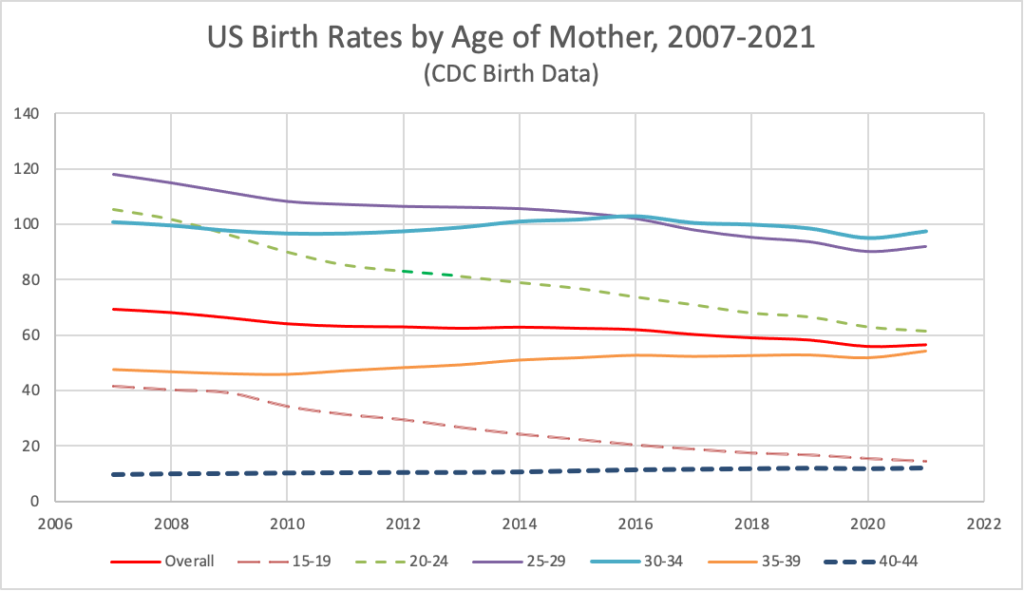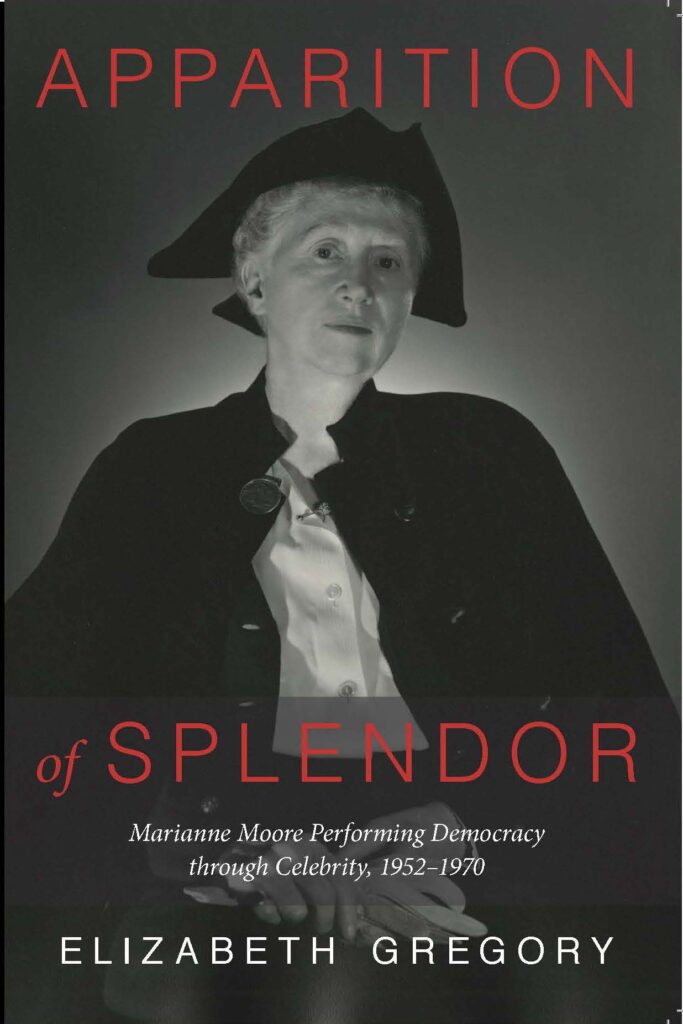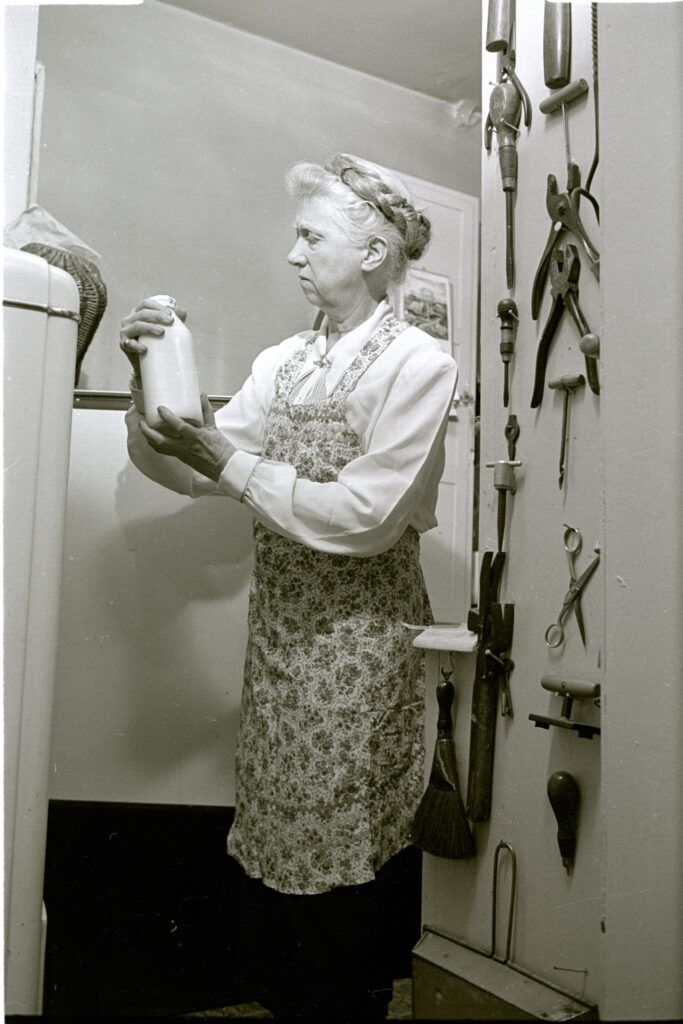Close on the heels of the 2022 final birth data issued earlier this month, which showed national fertility rate declines but a notable rise in Texas–the only state at the time with births affected by an abortion ban, the CDC has just shared their provisional birth data for 2023.
This 2023 data set does not include fertility rates for units smaller than the nation, so state by state analysis will come later. The granular data will show the effects of abortion bans on the roughly one half of US states that now have some level of restriction, including variation across race/ethnicity and age.
The national data show that, continuing the pattern of decline over the past 16 years, the overall US fertility rate fell to a new low in 2023, at 54.4 births per 1000 women aged 15-44, a fall of 2.9% from 2022. Teen births fell by 3% nationally, contributing to a 68.2% fall in the teen fertility rate since 2007. The fertility rate for women 20-24 fell 4% in 2023, with a 47.5% fall since 2007. The rate for women 25-29 fell 3%, for women 30-34 fell 2%, and the rate for women 35-39 fell 1%, while the rates for women 40-44 and 45-49 were unchanged. See chart below for overview.
Where rates for women 25-39 had been on an upswing over the past two years (suggesting a ripple effect of delay, as discussed in earlier posts), that pattern broke in 2023, with declines in all age groups 15-39 and stasis in the rates for women 40-49. Further data and analysis may clarify why some older women might be refraining from becoming pregnant, in a context where many states now refuse care to women with problematic pregnancies.
